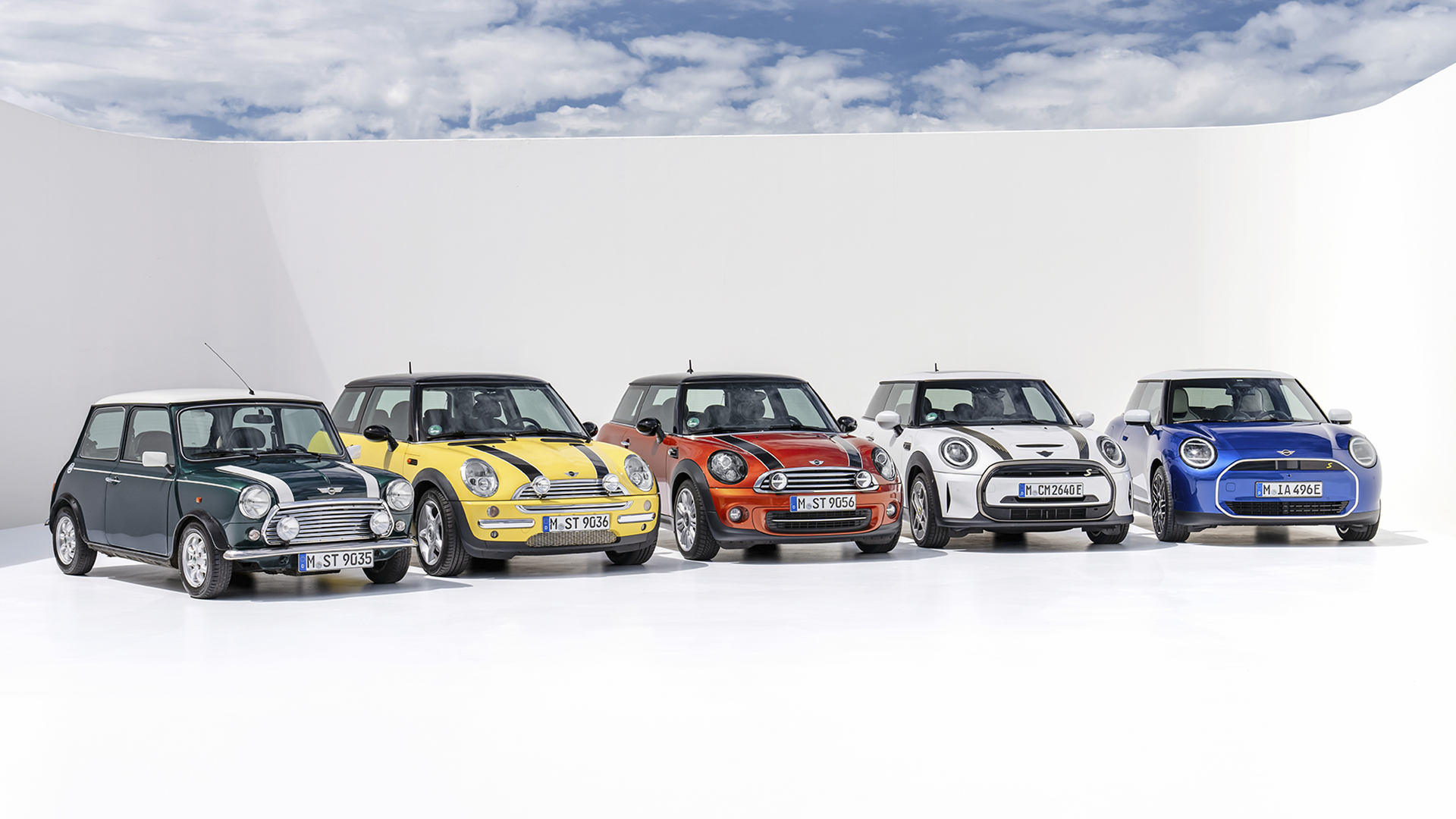

Retro design is a trap.
How do you continuously reinvent an old look while keeping it interesting and authentic? This was one of the many questions Mini designers had to answer as they shaped the new fourth-generation Mini Cooper Hardtop hatchback. Revealed today, what they came up with represents the biggest stylistic leap since BMW rejigged the iconic city car into a standalone brand in 2000.
Thomas Sycha, Mini’s head of exterior design, told me designing the new two-door Cooper was “a challenge, but a positive one.” His team didn’t have a lot of wiggle room as they dialed in the proportions; whether you call it a Hardtop or a Cooper, it has to look at least somewhat like the original Mini from 1959. Mission accomplished: You don’t need a master’s degree in carspotting to know exactly what you’re looking at.

Beyond the proportions, the finer design details add up to make a Mini a Mini. This time, instead of taking a trip to the heritage well and coming back with a basket of old-school styling cues, Sycha’s team focused on distilling the old Mini’s spirit and infusing it into a car fit for the 2020s.
“We wanted to bring back the car’s original character,” he explained.
That’s a tough one to nail down because the original Mini was a lot of things to a lot of people. It went on sale during Dwight D. Eisenhower’s second term as president; it retired a year before Bill Clinton left the White House. Developed as a practical alternative to kooky microcars like BMW’s own Isetta, it served as an economy car, a rally car, a pop-culture icon, and, in the 1990s, a big ol’ middle finger to modernity.




Arrange the old Mini’s multiple personalities into a Venn diagram and simplicity stands out as the main common denominator. “We looked at [the third-generation model] and asked, ‘What can we take off?’ The round lights needed to stay, and we decided to keep the Union Jack rear lights as well,” Sycha said, though those didn’t debut until 2018. “We chose to reduce rather than add,” he added.
Again offered with a gasoline engine or full-electric power, the new Cooper is wider and lower than its predecessor, riding on a slightly longer wheelbase. It ditches the bright exterior trim, the clamshell hood, and the fender-mounted trim and instead adopts a cleaner, more understated design. Bigger changes await out back, where the Union Jack motif now lives in triangle-shaped lights pushed out to accentuate the hatchback’s width.




The simplicity-first approach also permeated the interior. Mini bundled the instrument cluster and most of the switches on the outgoing car’s center stack into a free-standing 9.4-inch circular touchscreen that displays a new infotainment system, floating over a super-simple dashboard design. It’s not 100% digital in there; you’ll find a handful of buttons and toggles below the touchscreen, including the shifter, drive mode selector, basic audio controls (including a volume knob), and a twist ignition switch. Sadly, HVAC controls have been relegated to the touchscreen, though they’ll always be accessible on the OS’ top layer. Physical vent adjustments remain.
Overall, it’s a layout that brings the new Cooper in line with the endearingly basic original model while surfing the wave of minimalist designs that’s sweeping across the industry. Moving the gear selector up also allowed designers to carve out more storage space, but it also seems to put the nail in the coffin for manual Minis, despite how some inside the company are still pushing for it.




Sycha summed up the design as “fewer and better things, iconic elements, and analog embraces digital.”
Is this the right approach? You tell me; design is highly subjective. But, the new Mini arguably looks and feels like a Mini without looking or feeling exactly like its growing list of predecessors, which is a credible way of designing a retro car without falling into the trap of copying and pasting over and over again.
Got a tip? Send us a note: tips@thedrive.com